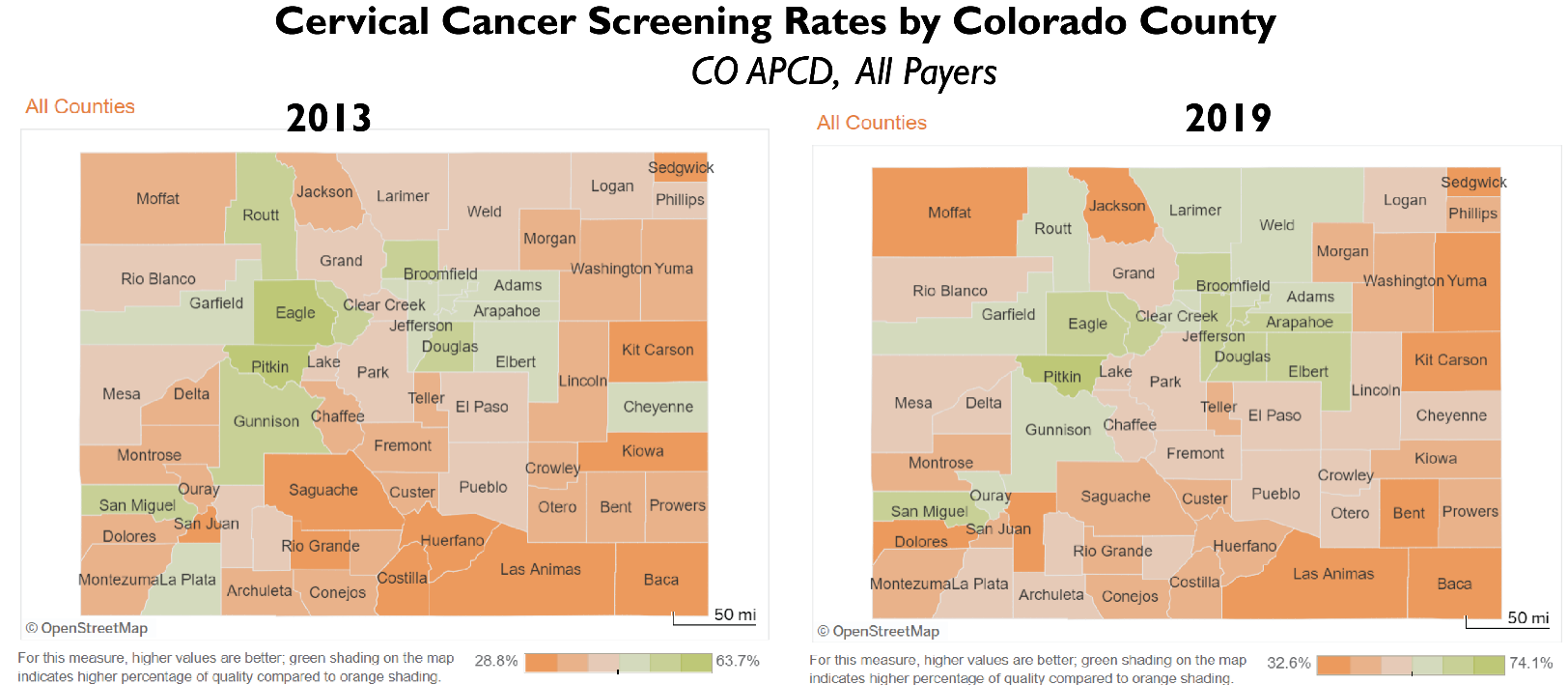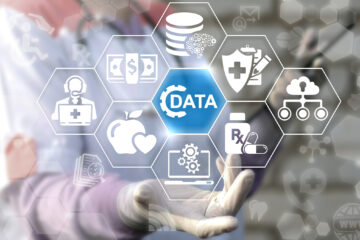More Coloradans Receiving Screenings, but Rural Counties Lagging Behind
January marks Cervical Cancer Awareness Month. In recognition, CIVHC is highlighting recently released Colorado All Payer Claims Database (CO APCD) data on Coloradans’ access to cervical cancer preventive screenings, which are critical to early detection.
According to the Colorado Cancer Coalition, an average of 150 cases of cervical cancer are diagnosed every year in our state, and the diagnosis rate statewide remains steady. Cervical cancer has declined substantially in the United States in the past 40 years, mainly because of increased access to regular pap tests. Research shows cervical cancer is preventable with regular screenings and HPV vaccines, and highly treatable if detected early.
In November 2021, CIVHC released an updated Community Dashboard with county and regional information to help communities understand how different aspects of health care — including cost of services, access to care, and use of preventive services and treatment — vary across Colorado.
Cervical cancer screening rates are one of two cancer-related preventive quality of care measures included in the report, along with breast cancer screenings. With these measures, we can see how utilization of preventive screenings varies by county and Division of Insurance (DOI) region from 2013-2020 in Colorado.
To measure cervical cancer screenings and other quality of care measures in the report, CIVHC used nationally endorsed measures by the National Quality Forum (NQF).[1] NQF is widely recognized as the gold standard for endorsement of evidence-based quality measures, which are used by the federal government and many state and private entities.
The cervical cancer screening measure (NQF 0032) describes the percentage of women in the recommended age range (21 to 64) who received an appropriate screening for cervical cancer. Appropriate testing is either Cervical Cytology (pap test) or a Human Papillomavirus (HPV) test. Which test is appropriate depends on various factors including the woman’s age and medical history.
Cervical Cancer Screenings in Colorado
Overall trends in cervical cancer screenings in Colorado are optimistic. Across all eligible payer types (commercial and Medicaid) from 2013-2019, screenings increased by 21% across the state. Statewide, screenings went from 48% in 2013 to 58% in 2019.

While improvements have been made statewide, looking at screening rates in rural versus urban counties shows that not all areas are trending in the right direction.
In 2019, 59% of women in urban counties received appropriate screening, while only 51% in rural areas were tested according to the guidelines. Several rural counties also saw notable drops in screenings from the previous year. For example, in Moffat County screenings dropped 7% in 2019 from 2018, and they dropped 8% in Las Animas and 12% in Jackson County.
Digging deeper into payer types and comparing Medicaid and commercially-insured women shows even more variation. Roughly half of women with Medicaid get screened appropriately compared to around 70% of commercially insured.
As a result of the COVID-19 pandemic, there was a decline in utilization of health care services in general. Comparing 2019 rates with 2020 for Medicaid and commercial insurance shows that the urban verses rural divide still exists, and screening rates declined by as much as 4% between the two years for Medicaid recipients in rural counties.

There are several possible reasons for lower screening rates in rural areas and across Medicaid members. In general, health care services tend to be less accessible in rural areas due to facility and provider workforce shortages. Traveling to an urban area to receive a test is time consuming and sometimes not feasible due to distance. Additionally, health inequities that many Coloradans on Medicaid, and living in rural areas also face, such as low income, lack of work time to visit a doctor, access to providers, language barriers, transportation issues, cultural concerns, and more can impact an individual’s ability to access services, particularly preventive services like cervical cancer screenings. The pandemic has likely exacerbated these barriers.
In spite of higher commercial rates, variation in screening rates by county and across regions is still persistent for all Coloradans, whether they are covered by Medicaid or commercial payers.

With the ability to dive deeper into the data available by age range, region and more in the Community Dashboard, Colorado communities and local health care systems can investigate how cervical cancer screenings vary in their area. Equipped with this data and other local-level data, they can explore the driving factors of this variation to inform improvement initiatives at the local level, and can track their progress in raising awareness and increasing access to services that can help save lives.
[1] It is important to note that CIVHC is currently in the process of receiving NCQA certification on these HEDIS® results, which have not been certified as of this blog.
